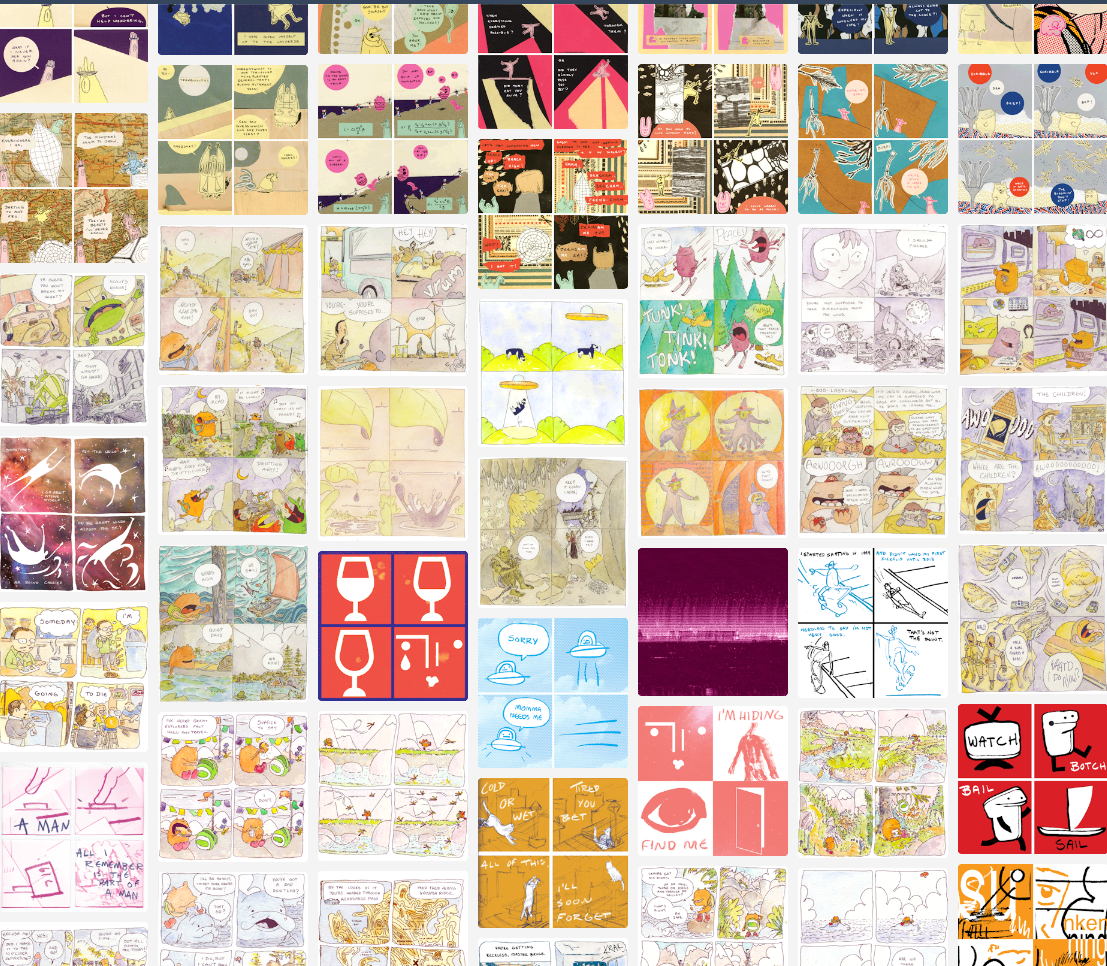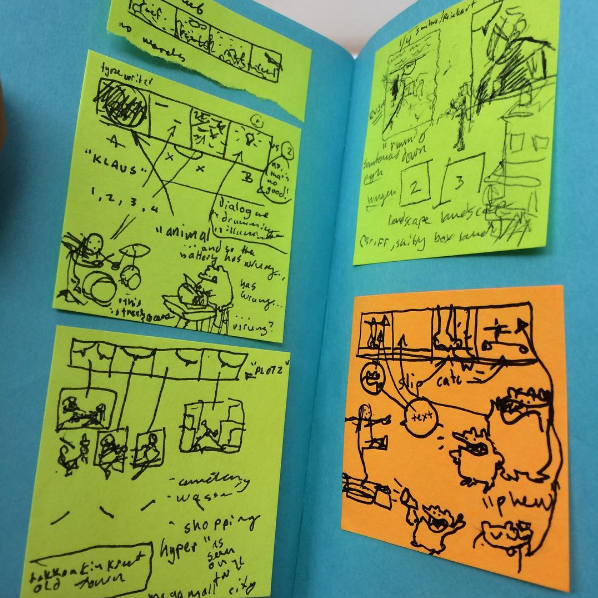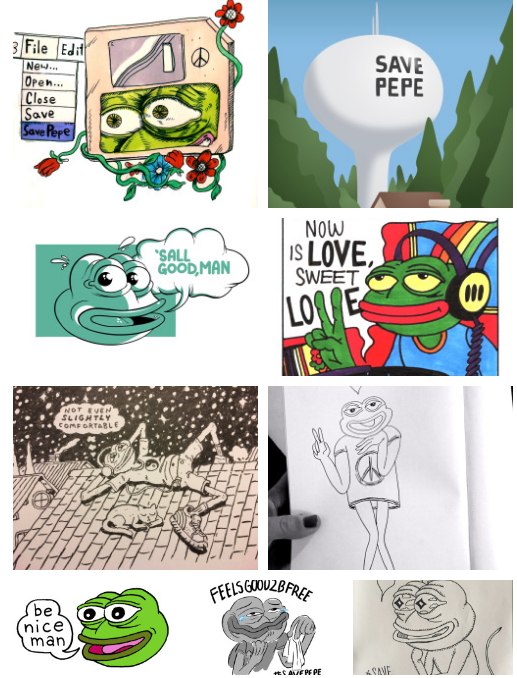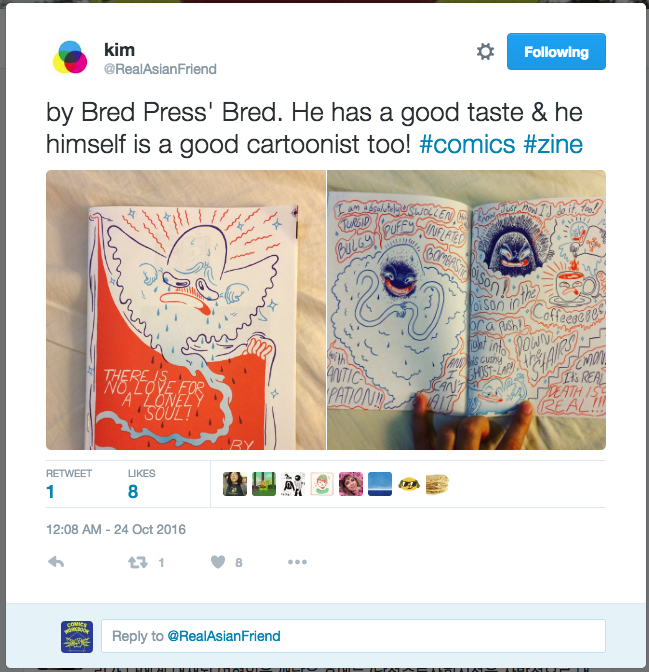Juan here with Comics Workbook’s ongoing CXC and LICAF coverage; my own thoughts on strip cartooning; HTML Flowers’ No Visitors – Issue One; Anya Davidson interviewed by Paste Magazine; a shout out to Good Comics by Kim; The Economist takes a look at the power of comics journalism; a Pepe oriented call to action from Matt Furie; Robyn Chapman soliciting stories about challenges or financial woes tabling at North American comics shows; Comics Assistant Professor Job opening at CCAD.

One week out and we’re still thinking about CXC on our end! It was a hell of a weekend. Reports and thoughts seeded by CXC have been coming in left and right. I’ve wrangled them all for your convenience. Check them out and if you like what you read, consider making CXC part of your comics adventures in 2017.
Here’s what we’ve got for you:
- The collective blow by blow take on the CXC experience, think of it as a Master post, if you will!
- Sacha Mardou’s personal CXC adventures
- Juan Fernandez’s (me ;)) CXC-inspired thoughts on expanding the “comics festival toolkit”.
- Kurt Ankeny’s post-CXC thoughts
- Alyssa Berg shares her first convention experience
- Caleb Orecchio’s detailed and hilarious tale of his CXC experience
- CXC 2016: 3 Questions for the Crew

⚡Frank and Niall Breen have taken some time to reflect on their experiences in Kendal during the Lakes International Comic Art Festival. You can check those out here to find out why if you’re anywhere near the UK, you’re going to want to add LICAF to your comics appreciation schedule next year.
- The Lakes International Comic Art Festival 2016 report by Frank Santoro
- Niall Breen on LICAF 2016

⚡ On my end, I’ve been thinking about 4 panel comics. A lot. Reading them, drawing them, teaching them… Through all those thoughts,one that I keep coming back to is that of openness of narrative. In today’s cultural landscape of fractured narrative and more broadly the idea of narrative collapse, I’m finding I’m interested in constellations of narrative. Non-linear experiences through a narrative world. Just as how comics creates fertile liminal spaces between panels, it’s my belief that comic strips have the potential to foster inviting spaces between individual strips. No large structures, just small moments. Some link together. Many don’t. Think Cul de Sac, Moomin, Macanudos.
All that said, I’m excited to announce that come Mid-November I’ll have a weekday comic strip going live online.
I tried the experiment of Daily Comics from 2013-2014. But I fell off that horse. That was at the Center for Cartoon Studies. After I graduated from the Center for Cartoon Studies I had to transition back into a more regular pattern of life. Life’s commitments made it very hard to find that time.

I’ve used these past two years to work on different forms and to experiment with technique. I realized that when it comes to comics, I’m here for the bliss of creation. The strip is where I feel that bliss most strongly. I’m ready and I hope you are too!

⚡ It’s exciting to see that The Economist is running a piece on the power and vitality of comics journalism in the current news media environment. It’s great to see the ascendancy of work like Sacco’s and Glidden’s happen real time.
Comics journalism is nothing new. It has been around for decades, kept alive by such talented artists as Joe Sacco, who has used the medium to depict everything from a war-torn town in the Gaza Strip to the Eastern Bosnian war. But it has only been in the last few years that it has really started to find its place in the mainstream media. The Nib, founded in September 2013, consists entirely of comics, many of which contain journalism and non-fiction. It has published more than 2,000 works on its website and released a popular 300-page book of its best offerings. The Cartoon Picayune has been around even longer—since April 2011—and showcases a variety of comics journalism online as well as in its yearly publication, which it offers to readers for $4. Even some of the more established publications, such as the New York Times, are making use of the format. In May, it published Patrick Chappatte’s moving five-part piece that takes an in-depth look at the lives of four death row inmates.
It is surprising, in the age of tight newspaper budgets and the 24-hour news cycle, that comics journalism is thriving. Ms Glidden says it’s because “it can make people stop and take notice.” Everyone is constantly bombarded by so many images and text that they can simply grow numb to all of the information being thrown their way. It helps that comics journalism is still novel to many people; its format encourages people to take an extra minute to fully consider the information being presented.
⚡ I wanted to share a short and sweet letter from Matt Furie:
Dear friends,
I need your help making positive pepe the frog memes to battle against evil trolls:
Please make a kid-friendly pepe in your style and send it to me at:
hashtagsavepepe@gmail.com
I’m creating a positive pepe artist database, so include your name.
also, please share nice pepe’s with the hashtag:
thanks!
-matt
⚡ Don’t miss this juicy interview with Anya Davidson over on Paste that goes into her work on Band for Life!
Paste: I think that love for your characters really shows in the work. A lot of these characters—and it was what really struck me about School Spirit, which was the first work of yours that I encountered—already feel distinct and fully formed when you first meet them. I’d be curious to know more about your process, especially for something serialized like this. How much do you plan, how much just comes from working with them for a few strips, etc.?
Davidson: I had a story arc for Band for Life, but I wrote the strips week to week. It kept the project fresh and spontaneous. Sometimes I’d write a few weeks ahead when I knew there was a thread I wanted to draw out. I had a lot of fun working that way. Lovers in the Garden, the book I just finished for Retrofit Comics, was scripted start to finish before I put pen to paper. And my next book is going to be fully scripted, too. For a graphic novel, in my case, just so I can keep everything straight, and so I can hone dialogue, I really prefer scripting. But the strip form uniquely gave me the freedom to improvise. Every cartoonist has their preferred methods—there’s no right way. As far as character development, all my characters are me. I went to see George Saunders speak and a woman asked him how he was able to write the adolescent girl so well in his short story “Victory Lap,” and he said, “Because she’s me.” I also think about people I know: their mannerisms and speech patterns and personal histories. So all of my characters have elements of friends, acquaintances and myself put in a blender. And I like to drop people into stories as they’re happening. I want people to feel like they’ve been dropped in a world that is fully formed—like the story started before they got there. I think that’s most engaging, most surprising.
⚡ If you’re a comics educator that is looking for a new opportunity, check out this job opening at CCAD – Assistant Professor – Comics & Narrative Practice, Illustration
⚡ I want to give the great Robyn Chapman of Paper Rocket Comics a signal boost for her “poll”. She is looking for your thoughts about challenges or financial woes tabling at North American comics shows. She does a great job at compiling small press and minicomics trends in her zine, The Tiny Report.
Hey, micro-publishers. I’m looking for a quote or two about the challenges of tabling at conventions. I’d be happy to hear numbers or about financial woes. You can remain anonymous. Please PM me in the next few days if you’re interested.
Kim’s always turning me onto the good stuff via their posts. Kim makes it easier to find art comics and wild zines in this crazy fractured hyperactive internet mediated comics landscape. What a godsend…
If you don’t follow their twitter or the Good Comics by Kim blog, I’d check that out.
I don’t know how they stay on top of everything, but that doesn’t keep me from appreciating their eye on comics or their writing… Don’t sleep on Kim!
Juan

